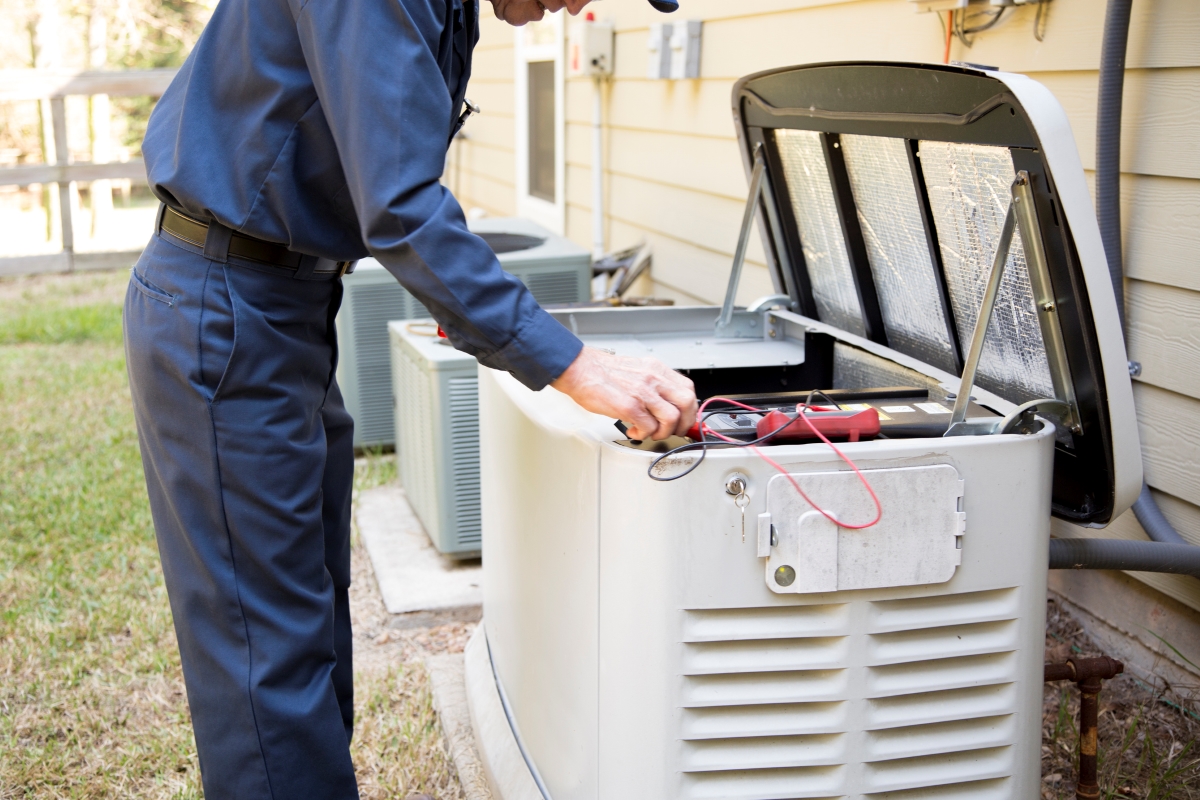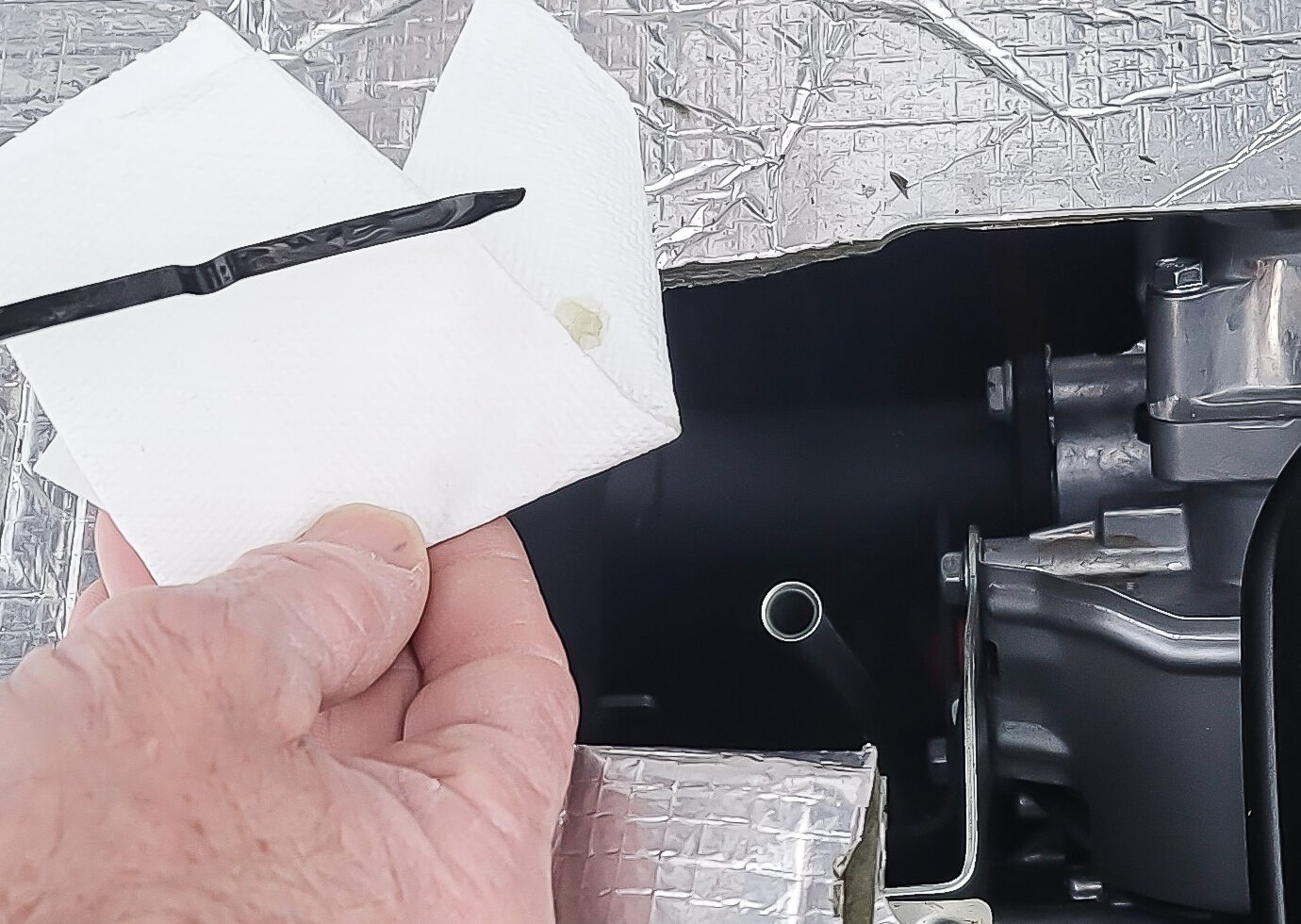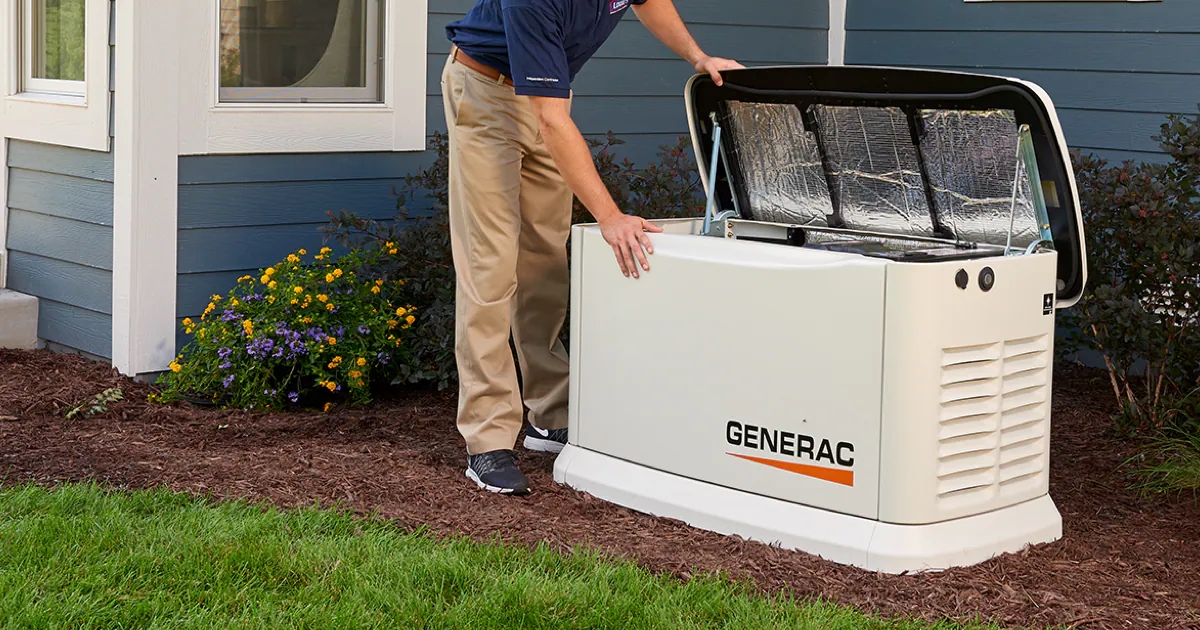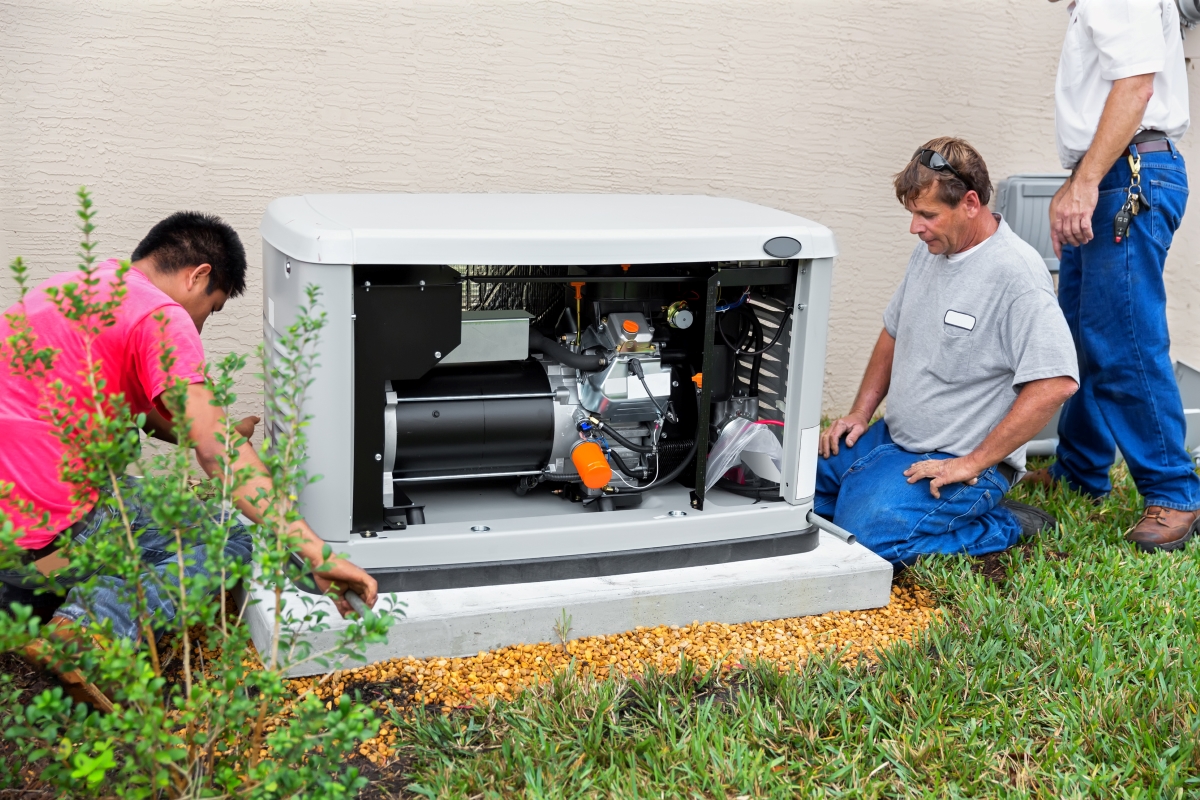

We may earn revenue from the products available on this page and participate in affiliate programs. Learn More ›
Home generators come in several sizes with a range of power outputs. Having one when the power goes out can ensure family members stay warm in a winter storm or help refrigerated food stay cold during a summer outage.
Like all appliances and power tools, generators require periodic maintenance to keep them operating at peak performance. As part of Bob Vila’s product-testing program, we installed and tested a 26kW Briggs & Stratton standby generator. During the testing, we worked directly with Matt Buff, Senior Trainer Standby Power for Briggs & Stratton, who told us, “establishing a preventative maintenance routine is essential to ensure that your generator will run smoothly in an emergency.”
The Benefits of Generator Maintenance
Regular maintenance of your home generator is crucial to keep it running efficiently and reliably when you need it most. This is especially important during hurricane or winter storm seasons, when a generator can really make a huge difference. Key benefits of keeping up with generator maintenance include:
- Increased longevity: Routine maintenance can help extend the lifespan of your generator, ensuring it runs smoothly for multiple years.
- Improved efficiency: A well-maintained generator runs more efficiently, providing consistent power output and reducing fuel consumption.
- Reduced repair costs: Regular check-ups can identify potential issues early, preventing a costly generator repair down the line.
- Enhanced reliability: Maintenance ensures your generator is ready to perform during unexpected power outages, giving you peace of mind.
- Optimal performance: By keeping your generator in top condition, you ensure it operates at peak performance, delivering the power you need without interruption.
Generator Maintenance After Each Use

When talking about generators for home use, no one wants to discover that it won’t start when the power goes out. Depending on the type of generator (portable or standby), recommended maintenance tasks vary, but in all cases, they keep the generator’s mechanical elements in working order. The best time to perform home generator maintenance is before you need the generator, although the following tasks should be tackled after each use.
1. Clean the Generator
Standby generators have protective cases, but blowing dirt and debris can build up and block airflow vents. Wipe the exterior with a damp rag, clear debris from air inlets and outlets with a soft brush, or use a vacuum’s hose attachment to clear away dirt that’s blown inside the unit. Perform these simple generator cleaning tasks after each use. Dirt and dust left on the generator can result in rust or even mold formation. If you can’t store the unit in a garage, consider buying a generator cover to help keep it clean.
2. Check Engine Oil
Most types of generators that use fuel (gas, propane, diesel) to run will have an oil reservoir containing the oil that keeps the engine’s moving parts lubricated. After use, check the oil level (consult the owner’s manual for how) and add oil if it is lower than it should be. Use only the type of oil recommended by the manufacturer.
The exception to this rule is a four-stroke engine found on some smaller portable generators. A four-stroke engine requires mixing the engine oil with the fuel so that four-stroke owners can skip this maintenance task.
3. Drain Fuel Before Storing a Portable Generator
Having enough fuel to run a generator is crucial, but don’t leave unused gasoline or diesel in a portable generator’s fuel tank. If the generator sits in storage for a few months, fuel left in the tank can thicken (called “varnishing’), which can lead to clogged fuel valves. The solution is to drain the tank, start the generator, and let it run to flush out leftover fuel in the carburetor.
Always follow the owner’s manual. Some generator brands may suggest incorporating a fuel additive (to prevent varnishing) rather than draining the fuel if you plan to use the generator within a few months.
Weekly and Monthly Generator Maintenance Checklist

Some maintenance tasks need not be performed after every generator use, but a few “simple steps can save you time and money on larger maintenance issues down the road,” Buff said. Your owner’s manual may suggest performing some tasks either weekly, monthly, or after a set number of hours of generator use.
1. Start up the Generator
For standby models, this may be automatic. The Briggs & Stratton standby generator we reviewed is configured to automatically start up weekly to ensure it’s always ready to come on when the power goes out. Like clockwork, the generator starts up every Tuesday at 2 p.m. and runs for a few minutes.
A portable generator should be manually started on a bi-weekly basis if it sits with fuel in the tank. This allows the oil to circulate through the engine to lubricate all the components. For those wondering how long to run a generator for maintenance: Just letting it run 5 to 10 minutes is sufficient.
2. Inspect for Damage and Take Preventative Steps
What could happen to a generator that’s just sitting there, unused? A lot, unfortunately, especially if the home has a rodent problem. Mice and other small rodents can chew wiring that can be costly to repair. Be vigilant—look for droppings near the generator and be alert to odors—rodent urine has a sour smell.
During generator inspection, look for holes in wires or small twigs and debris that could signal nest-building. If you suspect rodent activity, consult a rodent control expert or use rodent bait stations to prevent damage.
3. Change Oil and Filter
How often you need to change the oil in the generator will depend on how much you’re running it. Some portable generators call for an initial oil change after the first 30 hours of use. After that, oil should be changed after every additional 100 hours of use. The Briggs and Stratton standby generator we tested calls for changing the oil after every 100 hours of operation.
Change the oil filter when you change the oil. Use only the type of oil and filter recommended by the manufacturer. It’s a good idea to keep some oil and a spare filter on hand, so you have them when you need them.
Annual Generator Maintenance Tasks

As long as you perform the generator checklist of tasks listed above, both portable and standby generators should be in good shape. Still, many owners opt to have standby generators professionally serviced. Those with portable generators who don’t want to do their own maintenance can take the units to local small engine specialists for servicing or portable generator repair.
1. Replace the Plugs
Spark plugs (or glow plugs, if yours is a diesel-powered generator) produce the tiny electrical sparks that are necessary to ignite the fuel when a generator starts up. But, over time, plugs can fail, causing the generator’s engine to misfire or not start at all. Replacing the plugs in a generator after a year or 100 hours of use, whichever comes first, will help ensure the unit starts quickly the next time you need it.
2. Change the Air Filter
The air filter on a generator blocks dirt and dust from entering the engine, so when the filter becomes clogged, the generator may not run smoothly, or the engine can overheat because the clogged filter doesn’t allow an adequate amount of air to enter. This results in poor energy output, so changing the air filter should be on the list of annual maintenance tasks.
Like plugs, the general rule for replacing an air filter is after 1 year or 100 hours of use. If the generator has been operated in a dusty environment, consider replacing the air filter sooner to avoid problems.
3. Schedule a Professional Checkup
Owners of standby generators are well-advised to have their units professionally serviced every year or two to catch and correct any problems before they can lead to more significant issues.
Thorough standby generator maintenance requires a knowledgeable technician who can test a home’s electrical circuitry and inspect the transfer switch that directs the flow of electricity. “A good rule of thumb is to get your generator serviced either every 2 years or after 200 hours of use,” Buff said.
When to Call a Professional

While regular maintenance can be done by homeowners, some situations will require the expertise of a professional. To help keep your generator safe and operational, here’s when you should consider calling in the pros:
- Complex repairs: For a significant issue, like an engine problem or electrical generator repair, it’s best to leave this to a trained technician.
- Strange noises or vibrations: An unusual noise or excessive vibration when your generator is running could indicate a serious issue that will require professional inspection.
- Frequent power failures: If the generator fails to start or loses power often, a professional can diagnose and resolve the underlying problem.
- Safety concerns: If you notice any signs of a fuel leak, corrosion, or other potential safety hazards, it’s vital to call a professional to take a look at it safely.
FAQs
This depends on how long you plan on storing the generator. For shorter periods (up to a year), it’s better to store it with a full tank of fuel to help prevent moisture from condensing inside the tank, which can lead to corrosion.
Otherwise, if you’re storing the generator for a very long time (over a year), consider draining the fuel completely and running the carburetor dry to prevent any fuel degradation issues.
No, running a generator in the rain can be dangerous due to the risk of electrocution. To protect your generator, use a weatherproof cover or shelter that allows for proper ventilation while keeping it dry.
A generator can sit unused for a few months, but it’s best to run it now and again (every 1-2 months) to keep the engine lubricated and to ensure it’s ready to operate when you need it. If it will be unused for an extended period, consider draining the fuel or using a fuel stabilizer.
A generator should be placed at least 20 feet from your house to ensure proper ventilation and reduce the risk of carbon monoxide entering the home. Make sure it’s in a well-ventilated area, away from doors, windows, and vents.
